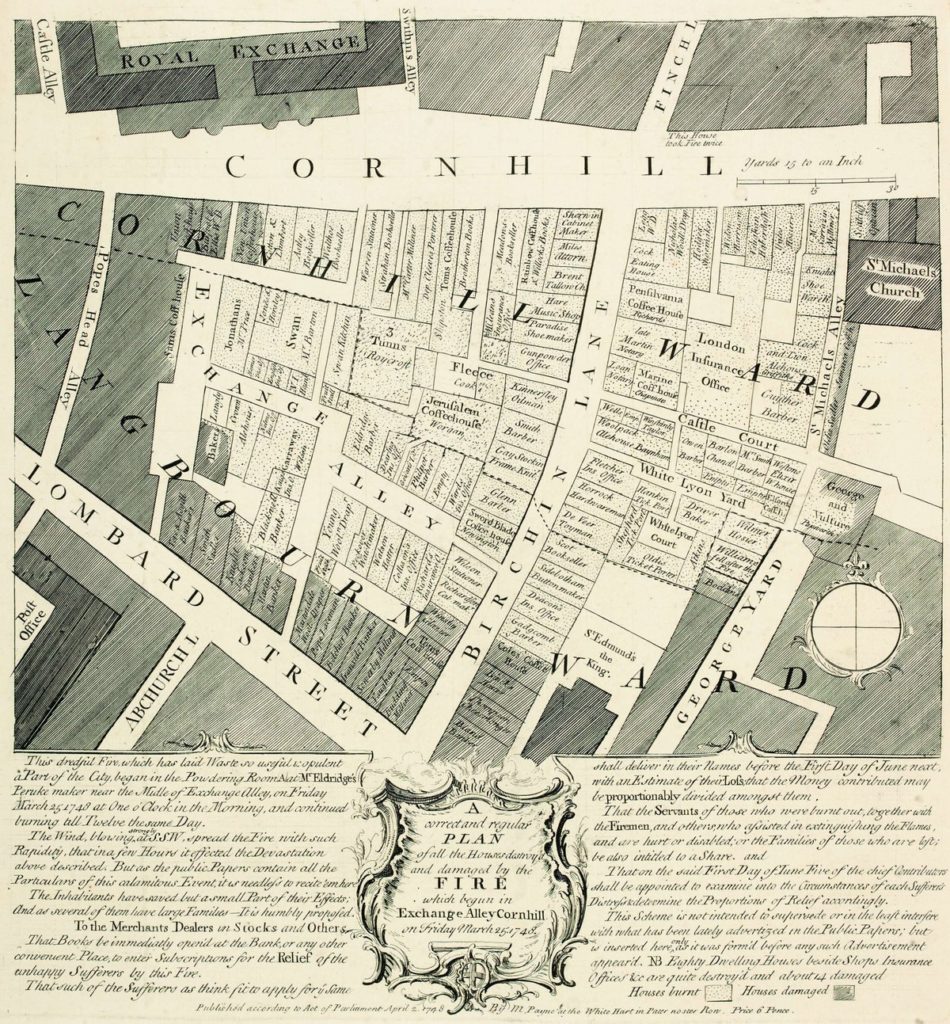All Change on Change Alley

At one o’clock in the morning of 25 March 1748, a fire broke out in Exchange Alley in the heart of the City of London. It started in the powder room of a barber and wig maker and by the time it was extinguished, eighty houses had been destroyed and fourteen more damaged. This engraved plan, based on a survey drawing of the site, was issued for sale to ‘Merchants, Dealers in Stocks and Others’ to raise money for the relief of those affected. Imaginative methods of crowd funding were alive and well, it seems, long before the advent of digital social media. I was also struck by the extraordinary variety of shops packed into this ‘useful and opulent’ part of the City, in contrast to today’s bland streetscape of chains and offices. Besides a predictable quota of bankers, notaries, insurance offices, ale and coffee houses, they included wool drapers, haberdashers, hatters, milliners, barbers, a shoe warehouse, watchmaker, hosier, button-maker, lace-man and saddler, six booksellers on Cornhill, stationers, one music shop, a cabinet-maker, tallow chandler, gunpowder office and oil man, toy man, hardware man, glazier, several bakers, a cheese-monger, cat meat seller and two fruit stalls…
This map is reproduced in a new publication by Bernard Nurse, London: Prints & Drawings before 1800, Oxford: Bodleian Library, £30.

– Iris Moon